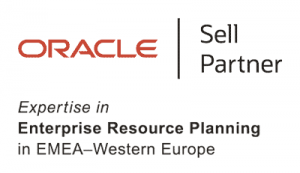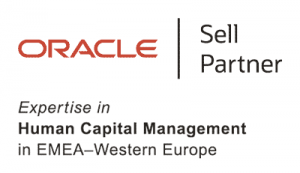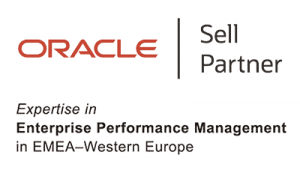Published on December 17, 2019
Fool’s Gold – “Best of Breed” – Part I
You can probably guess from the title that I am not a fan of the recent emergence of “Best of Breed” as a strategy for separating out the individual functional components of ERP and HCM SaaS Cloud platforms for the Back Office.
As my thoughts became written-word I took the decision to split this blog into two parts to keep readers focused. Part I looks at the business drivers where Part II the implications and reality of undertaking such a strategy. Yes, this has a heavy Oracle Cloud slant to it and for good reason, however I have commented on the wider market throughout. I want to stress from the outset that I am not talking about the Front Office where equally brilliant innovation can be found amongst both the Tier 1 and Tier 2 SME market providers for niche solutions that can add tremendous value to a business and can be integrated into the Back Office.
Many will disagree with my views but I genuinely hope many will also find them useful and gain some insight from my observations and arguments which is built upon my 30+ years’ experience as a practitioner who lived through the first generation of on-premise “Best of Breed”; has been involved in 40+ Oracle SaaS Cloud implementations as well being a former Chief Executive who was responsible for the vision, strategy and ultimately the successful exit of the UK’s premier Oracle Cloud professional services company.
Urban Myths and Missed Opportunity
Over three years ago I published a series of blogs titled “The Urban Myths of Oracle Cloud Implementations” (https://www.linkedin.com/pulse/urban-myths-oracle-cloud-implementations-part-i-mark-sweeny/). Technology innovation has advanced relentlessly to the extent that I honestly struggle to understand Organisations that are still “dithering” about moving to the Cloud. The costs involved in making and justifying the many known benefits for what is a “no-brainer” decision too many is just perplexing to me. Add this to the opportunity cost of delay itself or just doing nothing and the missed opportunity in terms of return on investment, both tangible and intangible, becomes eye-watering.
Since then, Oracle Cloud has accelerated in its maturity and functionality across the organisation’s Back Office. Whilst the offering still isn’t perfect (what product ever is?), it’s become THE platform play for combining Finance and HR onto a single data model providing operational insight; possessing a rich depth of business functionality; and become an engine for the constant delivery of technology innovation that makes use of new technologies like Adaptive Intelligence (AI) (a subset of Artificial Intelligence) and Machine Learning (ML) that are already embedded into the platform.
Oracle’s strategy of re-architecting the “Fusion” products for the Cloud a decade ago is now paying off big time. Acknowledged as being late to the Cloud, Oracle Product Development has now created so much momentum it has pushed itself to the front of the pack in the on-going Tier 1 “Cloud Wars” for the Back Office. This is now universally recognised, with even the likes of the mighty Gartner and Forrester (who Oracle have never had the easiest of relationships with) acknowledging this through their magic quadrant analysis.
Missed Opportunity? Not On My Watch
People will argue I am naturally biased because of my own rich Oracle heritage. But anyone who knows me well will also know that my argument is that I always saw “Cloud” purely as a business opportunity and Oracle created the best environment for future commercial success and a healthy long-term return on investment.
I will also tell you quite freely what everyone knows already that SAP is not true Cloud but a suite of products collected through acquisition that are “stuck” together and requires somebody else’s Cloud infrastructure to be installed upon. The core was never re-engineered for the Cloud so SAP is effectively “on-premise” in someone else’s data centre. However, the recent “Qualtrics” acquisition by SAP was an inspired strategic move.
Workday is a great company and truly has a great product for HR but soon as you need to stretch the product across the enterprise it becomes exposed with a lack of breath and depth of functionality. Its financial offerings are not as broad or as deep as Oracle or SAP. Will it catchup? Yes, but it feels like the “Peoplesoft” product development market cycle again and time is against them. Workday continue to develop their HR product in terms of depth and position it from a system of record to a collective set of capabilities. Its Achilles heel is that “experiences” go across an Organisation and finance functions touches every employee in some way so both HR and Finance need to be present. People just don’t work inside functional modules or silos.
The result of all of this is multiple core applications makes the underlying data model disaggregated and you immediately start to compromise on a consistent user experience and accessibility; data mining and insight; and future innovation delivery across the suite becomes much more complex as it is not naturally embedded into the product, not to mention the underlying integration between modules that has to be wired in and maintained.
The Experience Economy
The fundamental point here is the game has changed and regardless of platform choice we are now in the business of delivering “experiences – a collection of end-to-end capabilities combined togetherover standardised processes ensuring a single record of truth is maintained”. Software Vendors are investing more than ever to innovate at speed and win market share. In doing so tighter integration is required between traditional functional modules as well as a data model that is used by the new technologies like Adaptive Intelligence and Machine Learning.
Employees do not work inside functional modules whatever platform you ultimately select. In-fact with the advances in voice recognition technology the new “UX” is in-fact no “UX” whatsoever. Try doing that effectively on an on-premise system and by the way “putting lipstick on a pig” isn’t the long-term answer either! (See https://www.linkedin.com/pulse/welcome-experience-game-mark-sweeny/)
Graveyard of Acronyms & Phrases
However most recently there has been murmurings across the market of a phrase that I had personally hoped would remain in the graveyard of acronyms and phrases.
“Best of Breed” the first time around in the 90’s was probably the most-costly ill-conceived technical strategy ever created and its possible return is now even more concerning. Promoted at the time to be the universal panacea to all of one’s problems it failed on an epic scale.
What seems theoretically an idea of merit in taking the best solutions that each of the market software vendors possess and integrate them to deliver the ultimate enterprise Cloud Application SaaS platform in reality I will assure you will quickly become a nightmare! An absolute money pit of despair and frankly “Fool’s Gold” for carving up back office functionality by module as well as possibly creating a barrier to entry for use of new future technology.
History Repeating Itself
I vividly remember such visions of corporate Best of Breed architecture excellence from a previous generation of leaders with business cases stacked full of healthy ROI for justification.
It was then left to the Technical teams to work out how to get all of this to work. No surprise to any of us that we seemed to spend a lifetime wiring it all together (often with sticky tape and string) to then having to constantly plaster over the cracks. IT departments got bigger as we had to justify keeping this rat’s nest of cobwebs all hanging together as systems were upgraded and interfaces broke. Business got frustrated and hence “IT fails to deliver” became the mantra of the day.
2020 – Roll forward to the start of a new decade and now we seem to be talking about it again. The technology may have changed and we have sexy new architectures and tools: Open Source; PaaS; middleware; integration clouds; advanced transport mechanisms and REST API’s etc… to play with but effectively the conversation appears to be returning to the thinking of 25-30 years ago. So, what’s driving this?
1. Market Competition– the thinking that by continually playing Software Vendors off against one another through constant beauty parades prevents monopolies, drives excellence and value for money through competition. Wrong on every count – you cannot manipulate the market as the market adapts accordingly. The tier one SaaS market is already an oligopoly with Oracle, SAP and Workday the only three large scale enterprise solutions in play. Their growth plans are based upon known market behaviours, economics as well as the need for future innovative products
2. Avoiding Vendor Lock-in – Whilst every SaaS contract has exit clauses and great stress is often put on this during procurement cycles ensuring the customer is not locked in forever into one given platform. The reality is the transition and exit costs are on par with undertaking a new platform implementation. Changing the core SaaS platform on a regular basis (say every 3, even 5 years) is not going to stack up commercially. It is this that locks you into the platform and not the Vendor’s
3. Procurement Competition Structure – the way procurements are often structured (especially in the Public Sector); it’s still feature function against a scorecard. Completely the opposite way SaaS systems are designed and used in practice. But because business users often see functionality in isolation during a procurement sometimes the prettiest system just wins (fickle!)
4. Pandering to the Business– “We’re Special”– not really prepared to adopt Cloud processes and adapt business processesaccordingly. Best of Breed can be perceived as a way of providing greater flexibility which in reality it won’t
5. Build v Buy– There is a real need for the core data held centrally in a Cloud SaaS system to be accessible to feed local satellite systems or “Microservices”. It is these microservices that are specific to the Organisation and used on a daily basis that cannot be delivered through the core SaaS functionality is where local investment and development should reside. However, extending the “build” thinking into the Back Office SaaS domain with moving to a “plug and play” scenario where functionality can just be swapped in and out accordingly at module level is just wrong
Recognise any of these? I am a great studier of history often citing that the answers to many of today’s problems can usually be found in the past. But similarly, the thinking in some quarters of a new generation is obviously skipping these valuable chapters of the book and are unwisely setting their organisations on a course at best can be classed as “lost at sea” or at worse “a train wreck”.
Look out for Part II where I explain the rationale in further detail and also where “Best of Breed” thinking does have a place.
Disclaimer: This is a personal blog. The opinions expressed here represent my own and not those of my employer. In addition, my thoughts and opinions change from time to time and I consider this a necessary consequence of having an open mind. This blog is intended to provide a semi-permanent point in time and as such any thoughts or opinions expressed within out of date posts may not be the same or similar to those that I hold today.
















